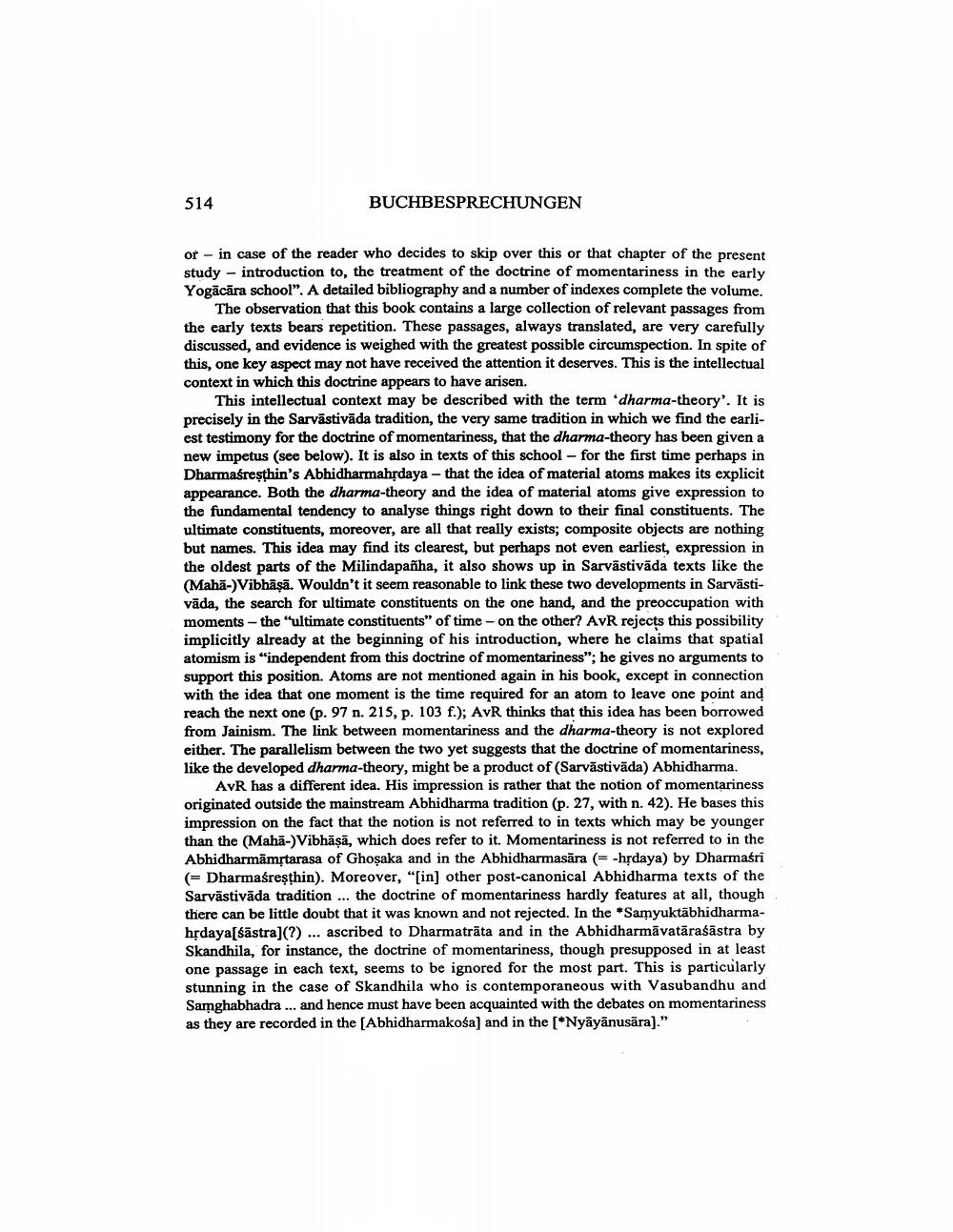Book Title: Buchbesprechungen Comptes Rendus Book Reviews Author(s): Peter Schreiner Publisher: Peter Schreiner View full book textPage 2
________________ 514 BUCHBESPRECHUNGEN or - in case of the reader who decides to skip over this or that chapter of the present study introduction to, the treatment of the doctrine of momentariness in the early Yogacara school". A detailed bibliography and a number of indexes complete the volume. The observation that this book contains a large collection of relevant passages from the early texts bears repetition. These passages, always translated, are very carefully discussed, and evidence is weighed with the greatest possible circumspection. In spite of this, one key aspect may not have received the attention it deserves. This is the intellectual context in which this doctrine appears to have arisen. This intellectual context may be described with the term 'dharma-theory'. It is precisely in the Sarvāstivāda tradition, the very same tradition in which we find the earliest testimony for the doctrine of momentariness, that the dharma-theory has been given a new impetus (see below). It is also in texts of this school for the first time perhaps in Dharmasreṣthin's Abhidharmahrdaya - that the idea of material atoms makes its explicit appearance. Both the dharma-theory and the idea of material atoms give expression to the fundamental tendency to analyse things right down to their final constituents. The ultimate constituents, moreover, are all that really exists; composite objects are nothing but names. This idea may find its clearest, but perhaps not even earliest, expression in the oldest parts of the Milindapañha, it also shows up in Sarvāstivāda texts like the (Mahā-)Vibhāṣā. Wouldn't it seem reasonable to link these two developments in Sarvastivāda, the search for ultimate constituents on the one hand, and the preoccupation with moments - the "ultimate constituents" of time - on the other? AvR rejects this possibility implicitly already at the beginning of his introduction, where he claims that spatial atomism is "independent from this doctrine of momentariness"; he gives no arguments to support this position. Atoms are not mentioned again in his book, except in connection with the idea that one moment is the time required for an atom to leave one point and reach the next one (p. 97 n. 215, p. 103 f.); AvR thinks that this idea has been borrowed from Jainism. The link between momentariness and the dharma-theory is not explored either. The parallelism between the two yet suggests that the doctrine of momentariness, like the developed dharma-theory, might be a product of (Sarvästivāda) Abhidharma. AVR has a different idea. His impression is rather that the notion of momentariness originated outside the mainstream Abhidharma tradition (p. 27, with n. 42). He bases this impression on the fact that the notion is not referred to in texts which may be younger than the (Mahā-)Vibhāṣā, which does refer to it. Momentariness is not referred to in the Abhidharmamṛtarasa of Ghoṣaka and in the Abhidharmasara (= -hṛdaya) by Dharmasri (Dharmasreşthin). Moreover, "[in] other post-canonical Abhidharma texts of the Sarvästivāda tradition ... the doctrine of momentariness hardly features at all, though there can be little doubt that it was known and not rejected. In the *Samyuktābhidharmahṛdaya[śāstra](?)... ascribed to Dharmatrāta and in the Abhidharmavatāraśāstra by Skandhila, for instance, the doctrine of momentariness, though presupposed in at least one passage in each text, seems to be ignored for the most part. This is particularly stunning in the case of Skandhila who is contemporaneous with Vasubandhu and Samghabhadra... and hence must have been acquainted with the debates on momentariness as they are recorded in the [Abhidharmakośa] and in the [*Nyāyānusära]."Page Navigation
1 2 3 4 5 6 7 8
